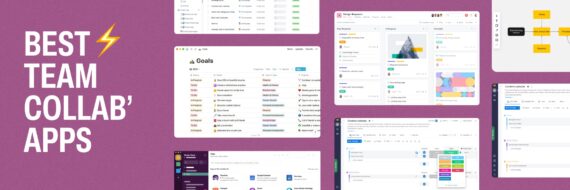Climbing the search engine rankings is about way more than just pumping a ton of average, surface-level content. What might’ve passed for an easy search engine optimization tactic back in the day, no longer holds water.
These days creating extraordinary SEO-friendly content is what brings people to your website. In this guide, we’ll walk you through the essential tips and techniques for crafting great content that not only appeals to your target audience but also helps rank higher in search results.
Key takeaways
- Create SEO-friendly content that focuses on originality, relevance, readability and keyword usage
- Incorporate low volume keywords and LSI (latent semantic indexing) keywords to improve search engine rankings
- Enhance content with visuals, headings & subheadings for better user experience, scannability and overall SEO performance
What is SEO-friendly content?
SEO-friendly content is content that’s created in a way to directly impact its search ranking. Crafting it involves aligning with search intent to build content that satisfies users and in the process signals to search engines that it’s highly relevant.
It’s an important part of effective SEO content planning and as far as examples of SEO writing go, you can consider this article one that ticks all the boxes.
🎬 Learn what Slickplan can do!
We filmed a short video to show you exactly how to use Slickplan
1. Keyword research and selection

Effective keyword research and selection are key to crafting content that screams SEO-ready.
In addition to your target keyword for each blog post, you’ll also want to take aim at mid- to low-volume secondary keywords as well as the lower competition long-tail keywords.
Couple that with LSI keywords and appropriate keyword density and search engines will have an easier time understanding the context of your content.
Long-tail keywords

Just because a keyword has lower search volume, which is the case for long-tails, it doesn’t mean these SEO friendly words can’t have a significant impact on how your content ranks.
By targeting long-tails, you increase the likelihood of attracting the right audience to your content and improving your overall search performance.
Remember, the goal of your SEO content is not only to rank higher but also to provide valuable information that addresses the search intent of users.
LSI keywords

LSI, or Latent Semantic Indexing, keywords are related terms that help search engines understand the context of your content.
By incorporating LSI keywords, you’re providing additional context to the Googles of the world, which can help improve your search rankings.
For example, if your main keyword is "jacket", LSI keywords could include:
- "reversible"
- "winter"
- "feather down"
- "warm"
- "padded"
- "puffer"
Including LSI keywords not only enriches content for the reader but also helps search engines better understand its topic and relevance.
2. Crafting quality content

How to write SEO friendly articles? While technical stuff is important, the most important thing is to create top-tier, well researched content that’s both informative and engaging.
SEO content writing must prioritize things like readability, scannability and accessibility, as these directly influence user engagement and search engine algorithms.
Additionally, incorporating other types of SEO content like images, videos and infographics can help to improve UX and boost content engagement.
In other words, massive, uninterrupted blocks of text should be avoided. The content might be great but walls of text are a major turn-off.
Focusing on crafting great content enables you to provide value to your readers, which keeps them on page longer and signals to the search engines that your content is king. This is one of the cornerstones of the content marketing and SEO relationship.
Readability and accessibility

Readability and accessibility are key elements when building content that appeals to a wide audience and achieves higher rankings in search engine results in the process.
There are a bunch of tools you can use to measure the readability of your SEO writing:
- Grammarly
- Microsoft Word
- Hemingway App
- WebFX Readability Test
- Readable Readability Tools
- Datayze Readability Analyzer
These tools assess readability using various tests like the Flesch-Kincaid (which is built right into Word, just hit F7), Gunning Fog score and the Coleman Liau index.
Google also evaluates the readability and accessibility of each web page for SEO purposes through tools like Google Lighthouse.
Enhancing readability of online content and ensuring accessibility for all users not only improves UX, it also can reduce bounce rates and increase click-through rates. Those are wins across the board that help improve SEO and attract more visitors to your site.
Visual elements

As mentioned, incorporating visuals such as images, videos and infographics can greatly enhance UX and improve engagement.
These multimedia pieces can also make your content easier to understand. A picture is worth a thousand words, so visual representations of concepts and information go a long way in increasing comprehension, making your content both more attractive and engaging to readers.
However, it’s important to make sure that these elements are accessible to all users, which means providing alt text (alternative text) for images and captions for videos.
Infographics, in particular, can offer several SEO advantages, such as:
- Increased backlinks
- Improved visibility in image search
- Enhanced content quality
- Long-lasting relevance
- Brand awareness
By thoughtfully incorporating visuals into your content, you’ll be able to create SEO-friendly articles that provide a more comprehensive and engaging experience for readers.
3. Structuring your content

Properly structuring your content with headings, subheadings and linking strategies is a vital aspect of improving SEO performance.
By organizing your content in a clear and coherent manner, something an SEO content creator can assist with, you’ll not only make it easier for readers to engage with it but also provide opportunities for:
- Keyword placement
- Increasing authority
- Enhancing site relevance
- Improving visibility in searches
Headings and subheadings

Headings and subheadings play an important role in dividing content into sections, making it easier to read, consume and understand.
By optimizing your header tags with pertinent keywords, you’ll be able to provide structure and hierarchy to your content, helping search engines understand the organization and purpose of your content.
Use concise and descriptive language in your header and subheaders that tell readers exactly what they’ll get in each section. No one wants to guess their way through your page. Strive for clarity over being clever.
In addition to improving readability, headings and subheadings offer opportunities for target keyword placement, helping search engines understand the topic of your content and rank it accordingly.
By thoughtfully incorporating headings and subheadings into your content at regular intervals, you’ll improve reader engagement with your content and help them find what they’re looking for with ease, leveling up SEO performance in the process.
Internal and external linking

Incorporating both internal links and external links can improve your content’s SEO performance by increasing site relevance, building authority and trust, and ultimately visibility in search queries.
Inbound links are either internal links or a link coming to your site, while outbound links are ones that link out authoritative pages that strongly back up information in your content.
It’s as straightforward as it gets, you just connect one page of your website to another page on the same website or a different website.
Both types of linking can help search engines and users better understand your content, Backlinko has an excellent link building for SEO guide (and that right there is an example of an outbound link).
When utilizing internal and external links, it’s important to link to relevant and high-quality websites, use descriptive anchor text and link to pages that provide genuine value to the reader. A link for the sake of link building is a link you probably don’t need.
By adhering to these best practices, you’ll create a more comprehensive and engaging experience for your readers, ultimately improving your content’s search rankings and overall SEO performance.
4. On-Page optimization techniques

Optimizing on-page elements such as title tags, meta descriptions and URL structure can significantly impact your content’s search rankings.
By incorporating target and LSI keywords into these HTML tags, you’ll not only improve your content’s visibility but also enhance user experience, reduce bounce rates, increase dwell time and boost click-through rates.
Title tags and meta descriptions

The title tag and meta description are snippets of text that appear in search engine results pages (SERPs) and provide an opportunity to emphasize relevant keywords and phrases.
By optimizing your title tags and writing a well-crafted meta description that features your target keywords, you’ll improve click-through rates, search visibility and, in turn, boost SEO.
It’s recommended that title tags have a length of 50 to 60 characters, while meta descriptions should be kept between 150 and 160 characters for optimal performance.
Focusing on crafting engaging and informative title tags and meta descriptions can have several benefits:
- Higher search rankings
- Increased traffic to your website
- Capture the attention of potential readers
- Provide search engines with a clear understanding of an article’s topic and relevance
URL structure

A simple, keyword-rich URL structure can give you an easy SEO boost, here are some tips to follow:
- Keep it short
- Get rid of stop words
- Standardize URLs in lowercase
- Use hyphens instead of underscores
- Incorporate precise keywords in the URL
By following these tips, you’ll create a straightforward, keyword-enriched URL structure that improves search performance and makes them easier to recall.
5. Avoiding common SEO pitfalls

Ensuring the success of your SEO article also means making an effort to avoid common SEO pitfalls like keyword stuffing, duplicate content and generally poor site structure.
Keyword stuffing, in particular, is a big negative ranking factor by search engines which can lead to penalties and decreased search rankings.
By focusing on creating high-caliber content that provides true value to users, you’ll be able to naturally incorporate necessary keyword phrases, avoid other pitfalls and improve your content’s search rankings.
6. Measuring content performance

Having content guidelines for SEO is great, but you need a way to know how you’re doing and be able to pinpoint areas for improvement. Fortunately there are plenty of content SEO checker tools for exactly that:
- Buffer
- Ahrefs
- Parse.ly
- Hubspot
- Semrush
- Google Analytics
Use these to evaluate content performance through metrics like page views, referral sources, time on page, bounce rate, social shares, optimal word count and more.
Regularly monitoring and analyzing your content’s performance allows for data-driven decisions that enhance your overall web content strategy and increase website traffic.
7. Updating and repurposing existing content

Refreshing and reusing existing content can also enhance search rankings, bring more traffic and prolong the life of your content.
Updating and repurposing content ensures the information remains timely, engaging and valuable for your readers which can lead to increased visibility in search, more backlinks, and ultimately, better SEO performance.
NerdWallet provides a good example of SEO writing to this end, they update their best credit cards for college students page every month to ensure evergreen results for that search term.
8. Promoting your content

Content promotion through social media, email marketing and other channels is critical to increasing visibility, driving traffic and providing an overall boost to your SEO efforts.
By sharing your content on platforms like Facebook, X, LinkedIn or wherever else it makes sense for your brand, you can effectively leverage content marketing to reach a wider audience.
Email marketing campaigns in particular allow you to directly reach your subscribers — an audience that wants to hear from you — and keep them engaged with your content.
Remember, the more visibility your content receives, the more likely it is to be shared, linked to, and ranked higher in search results.
The role of search engines in content ranking

Search portals, such as Google, use algorithms to rank content based on factors like quality, relevance, user experience and a bunch of other metrics.
And the longer readers remain on a page, the more likely search engines will recognize the content as valuable, thereby improving its SEO performance.
Keywords and backlinks are also crucial elements that’ll help you rank higher in Google search results.
Focusing on crafting content that’s easy to read and delivers an excellent user experience not only keeps readers engaged, it also projects positive signals to search engines, potentially enhancing your content’s ranking.
Try to incorporate long-tail keywords and latent semantic indexing (LSI) keywords into your blog article to further improve your content’s relevance and visibility in search.
Summary
Creating content that’s optimized for search is essential for attracting more organic traffic and getting onto that coveted first page of Google results.
By understanding the key components of SEO-friendly content – and by extension, why content is important for SEO – you’ll be well on your way to mastering the art of SEO content writing:
- Conduct effective keyword research
- Create content that fulfills search intent
- Properly structure content
- Optimize on-page elements
- Avoiding common SEO pitfalls
- Measure content performance
- Updating and repurpose existing content
- Promote what you and your team create
And remember, the ultimate goal is not just to rank higher in search results but to provide valuable, engaging and informative content that resonates with your target audience.
Slickplan is here for you when you’re ready to get started with your website content planning.
Plan smarter content with Slickplan
A collaborative workspace to handle all your content needs. Plan, gather and create together.
Frequently asked questions
How do I know if my content is SEO friendly?
SEO writing involves nailing research for keywords, meeting search intent, structuring content well, ensuring readability and optimizing on-page elements. The best way to truly know if your content is optimized for search is to use a tool to measure it.
Is it okay to put a table of contents above the blog post?
Absolutely! A table of contents makes it easier for visitors to find what they're looking for and gives them a clear indication they're in the right place, which can increase dwell time. A table of contents is particularly important when you're writing long form content.
Why is user experience an important part of SEO?
How someone interacts with your landing pages or blogs makes a difference. Great UX lowers bounce rates, increases dwell time and improves clickthrough rates, all of which helps search rank. Add a strong call to action and you can even see more conversions.
How can I improve the readability and accessibility of my content?
Enhance the readability and accessibility of your content by using shorter sentences, a conversational tone, straightforward and simple word choice, and avoiding basic spelling or grammar mistakes.
What is the importance of long-tail keywords in improving SEO?
Long-tail keywords are more specific and targeted, helping you better attract visitors in your niche. These keywords often have lower competition, making it easier for websites to rank higher in SERPs and reach users looking for specific information or products.






 X
X

